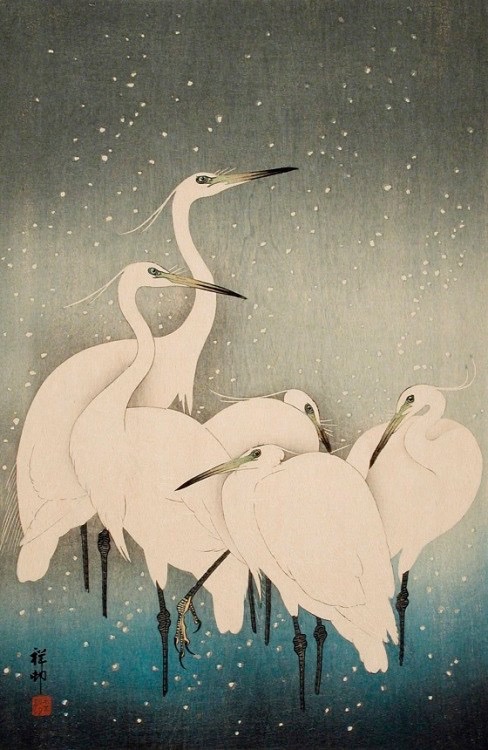I rode the morning ferry out to the island of Vinalhaven to spend part of the day birding with a friend who lives there. A naturalist by profession, Kirk knows where to find the birds, and despite the rather bleak, chilly, and eventually rainy day, we had a good time looking. I've gotten out birding so infrequently lately that being able to spend a concentrated amount of time watching any avian life is welcome. So to be shown a bird I hadn't previously seen in Maine within ten minutes of getting off the ferry was bonus.
Cattle egrets are a small white heron generally seen well south of Maine. Until today, the only ones I'd seen were in Florida and North Carolina. How this one ended up on an island off the Maine coast is one of those mysteries of migration. As I disembarked, I ran into one of the ferry captains who is also a birder--a birder who particularly enjoys chasing rarities. When I explained that I was out there so Kirk could show me a cattle egret, he complained, "Kirk never tells me anything!" An island resident had recently described to him seeing a strange bird, like an "all-white gull with a big yellow bill." It suddenly dawned on him that she'd been describing the cattle egret. He'd have to try to see it on a future trip.
Kirk and I headed off through town to "The Ballfield," where he'd photographed the bird not an hour earlier right next to his car. A woman driving past stopped to tell us that she had recently seen the egret following Wizard. Turns out Wizard is her horse. That made sense to Kirk, because the bird had first been spotted on Greens Island following a small flock of sheep. They got their name because they follow livestock, eating the insects such animals attract. So we went off to see Wizard. Before we got there, however, we spotted the egret hunched over in the middle of a lawn. Kirk set up his scope and we got great looks at this southern visitor.
We were soon joined by a neighbor who knew Kirk and who may or may not have been slightly inebriated. Even though we were clearly already watching the egret, he wanted to be sure we saw the bird, gesticulating wildly at it. "I knew you'd want to see it, because I know you like birds and sh*t," he declared. He had seen the egret earlier standing in a ditch full of minnows, eating. "It looked to me like a f**king big white sandpiper!" he said excitedly. "Is this rare? Because I've never seen a bird like this here before." Kirk assured him that it was very unusual.
You'd think that the rest of the day's birding would have been anticlimactic after that. But although I didn't pick up any more new Maine species, every stop had its highlights. At State Beach, a big flock of pale and lovely snow buntings flew back and forth above the pebbly shore. Horned larks hung out in the road with a single late-migrating semipalmated plover. A great blue heron croaked loudly as it flew in to land on the opposite shore. At Folly Pond, we spotted eight eagles, including a pair of adults perched side by side on a spruce bough, and a couple of brightly plumaged male wood ducks drifted past with a pied-billed grebe. At a culvert called The Boondoggle, a lone yellowlegs stood knee-deep in what must have been freezing cold water while hooded mergansers drifted and bobbed. The Basin offered up hosts of Canada geese and several more duck species.
Even the ferry ride home was not without adventure. My ferry captain friend invited me to ride back to Rockland up on the bridge, which offered great views of flocks of Bonaparte's gulls, a zillion more loons, big rafts of eiders, some surf scoters, and one gannet. He recounted the day last summer when he'd seen an albatross fly across the bow. The passage across the bay was a rough one, with swells rocking the ferry hard enough to knock over a chair at one point. The spray of whitecaps corrugated the surface of the sea. Thanks to turning back the clocks last night, twilight (and a cold rain) were settling in over Rockland Harbor as we pulled into the ferry slip. As we got ready to unload, a seal popped its head out of the water just off the port side, giving us all a long look as if wondering what we were doing out in this weather. Cattle egret, I wanted to tell the seal. And eiders, mergansers, and crossbills. I don't think it would have understood.
Brisk island wind, rain.
Egret and I share a look,
both visitors here.
